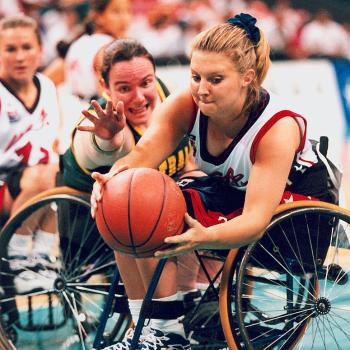I want to run through a case study from a physician who writes about gaslighting herself when it comes to difficult-to-diagnose chronic illness. I think this example is super important because it illuminates just how powerful is the tendency to dismiss symptoms that aren’t easily assessed and explained.
This essay by Pooja Yerramilli ran in October 2020: “I have all the symptoms of a Covid-19 long-hauler — but I’m hesitant to identify myself as one.” It opens:
As a physician, I never thought that I would someday be lumped into the category of patients known as “not otherwise specified,” or NOS for short. This category is dominated by women suffering nonspecific symptoms that are inconsistently appreciated by clinicians who eventually conclude that the problem is entirely in the mind.
She explains her history:
Despite testing negative for SARS-CoV-2, the virus that causes Covid-19, the course of my illness mimicked that of the “typical” coronavirus patient. The relentless dry cough and fatigue were followed by shortness of breath. My mentors, also physicians with whom I had informally consulted, were concerned that mine was a false negative test; at the time, the sensitivity of the swab was thought to be around 70%. But my chart was never flagged as “CoV-positive,” so my story was never counted in the growing statistics of employees affected by the disease.
Unfortunately, for many people (especially women), post-infection antibody testing will not accurately indicate whether you’ve been previously infected: “A Two-Phase, Single Cohort Study of COVID-19 Antibody Sera-Surveillance.”
Dr. Yerramilli describes her slow recovery from the acute infection:
After a long month of isolation, asking every week to be cleared for work, I finally insisted that I was ready. I was no longer short of breath while walking around my apartment. The remaining symptoms — weakness, muscle aches, and low energy — were nonspecific, subjective, and, therefore, things I could surmount. My persistent painful cough was given various names. Some providers definitively labeled it as postnasal drip, others said it was new-onset asthma. My colleagues and I settled on post-viral bronchospasm.
Already there’s a disconnect between what she’s experiencing and reality. Neither benign post-viral asthma nor a generic, non-concerning lingering cough cause this:
After working several shifts, I found myself unable to get out of bed one morning: the aches and fatigue were taking over. “Get up! Push through!” my mind scolded my body. My body and mind played this game for weeks. Every time I returned to work, hopeful to care for patients, my body protested, breathing hard and exhausted by the end of morning rounds.
Obviously something serious is going on. But watch what she does to herself:
Four months into my “illness,” no closer to any answers, I settled on “deconditioning, NOS.” If I took the right precautions — sleeping nine hours a night and dragging a chair around on rounds — I could last through the workday.
Let’s be very, very clear: You cannot “decondition” this badly if you are otherwise healthy and making a sincere attempt to be as active as possible.
With true deconditioning, the effort of slowly increasing activity day by day will result in improved fitness. That’s how it works. That’s what “deconditioning” is. Even if she were deconditioned after a month laid out with a respiratory virus, she would be seeing a steady increase in stamina three months into recovery. Very clearly Dr. Yerramilli’s on-going illness is not due to a lack of exercise.
But around that time, clinics started to reopen and I finally met my primary care physician for the first time ever. As I walked with the medical assistant and felt short of breath again, I peeked at the oximeter: My heart rate had risen to 149, almost twice what it should have been, and my blood oxygen level gradually dropped to 79%, when it should have been close to 100%. “Is this why I’ve been feeling so tired?” my body asked.
Whoa! Oxygen levels dropping to 79% while walking? There we go, right? This doesn’t happen in healthy people. This DOES NOT HAPPEN IN HEALTHY PEOPLE.
For a comparison, as I write this, I am actively sick with COVID. Confirmed test to a textbook set of symptoms. Short-COVID, Lord willing, but five days in I have the dry cough, the fatigue, all that. (Probably the peaking infectiousness, too. Unless you’re intentionally trying to catch a potentially deadly or disabling illness, stay away from people who are just a week into their infection, eh?) For journalism reasons I just interrupted this paragraph and went out for a brisk walk with the pulse ox.
Results: Walking quickly (it’s cold out), HR was 120, O2 was 97-98%. Heart rate is maybe slightly high for me, hard to say because having COVID will skew your perception of speed and effort. Call it normal. After a short full-speed run (admittedly: my “full speed” is not very fast, but that’s not what we’re measuring), HR went up into the 150’s (normal), but oxygen? It actually bumped up to 99%.
That’s normal. I am not an athlete. I am a pushing-50 slightly overweight housewife with a disabling chronic illness. My exercise level (which varies from year to year depending on where we are in the disease experience) over the past six months has been light housework and going out for a walk when I can.
Here’s a non-paywalled NYT article on COVID and healthy O2 levels. In a South African study, high-risk COVID patients whose home pulse-oximeter readings dropped below 95% were instructed to call a doctor, and if below 90% to come to the emergency room ASAP for care. This single intervention dropped death rates 50%.
So naturally a doctor who experiences this extremely worrisome drop in her blood oxygen saturation while just walking is surely going to recognize that something is very, very wrong . . . right?
Dr. Yerramilli describes what she and her fellow physicians decided for a course of treatment, now that they realized her intense, unremitting fatigue was linked to this extreme, emergency-room-level drop in oxygen saturation:
But the results of these preliminary tests, completed five months after my first symptoms, were nonspecific. I was given no clear diagnosis or treatment plan. The consensus reached by the specialists was that the oximeter readings, which repeatedly showed my oxygen levels dropping as I walked, were faulty. Case closed.
“See?” my mind retorted. “It’s always just been in your head.”
***
Readers: If you are experiencing symptoms that you know aren’t right? Take your body’s signals seriously.
I think Dr. Yerramilli’s story is a powerful cautionary tale of just how deeply ingrained is the mindset of “if we can’t explain it then it must be your imagination” in the practice of medicine for many people. Pray for those doctors.
Then, if only for your own sanity: Keep looking until you find a physician who won’t give up on you, even when easy answers aren’t forthcoming.
Doctors who recognize the limits of their own knowledge and the reality that medical science is a field with many unanswered questions are out there.
More than ever, unfortunately.
Local surgeon—with decades of experience, in very high demand (>12-month waitlist), very physically fit (long-distance runner)—gets a mild case of Covid (never hospitalized), then abruptly retires due to persistent fatigue.
Another face of "mild" Covid.
— Harry Thomas (@DrHarryThomas) January 14, 2022
This. I personally know 2 surgeons who can only operate at <50% of their previous capacity due to #longcovid. Several other consultants who can’t work or on reduced hours/duties. No one is counting this in impact on NHS services. Why?#countlongcovid https://t.co/FR9kJuT7j5
— Binita Kane (@BinitaKane) January 15, 2022

Artwork: “Portrait of Dr. Félix Rey” by Vincent van Gogh (Public Domain).
PS for those who are wondering, I actually do have a lot of years of firsthand experience with:
- Respiratory viruses that lay you out for a month, and then you recover.
- Post-viral asthma.
- Chronic (benign) post-infection cough-of-death that lasted years.
None of that caused anything like what Dr. Yerramilli and others are describing with Long COVID. Just not the same thing. Not at all.












